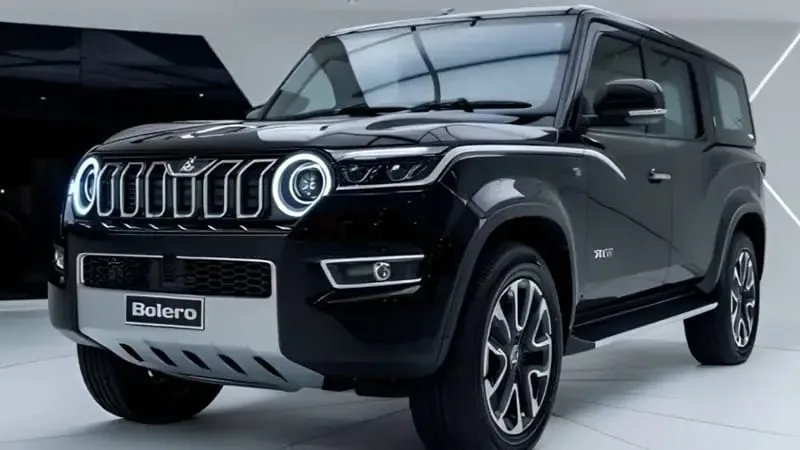iPhone vs Samsung Galaxy : The smartphone world is a battlefield, and at its forefront are two perennial rivals: Apple and Samsung. With the recent launch of the Samsung Galaxy S25 series and the highly anticipated iPhone 17 lineup just around the corner in September 2025, the competition is fiercer than ever. Consumers are faced with a challenging decision: which flagship will reign supreme? This in-depth comparison delves into the rumored and confirmed features of both titans, helping you decide where to invest your hard-earned money.
Design and Display: A Tale of Two Philosophies ✨
Both Apple and Samsung are pushing the boundaries of smartphone design, with a particular focus on slimness this year. The Samsung Galaxy S25 series, which debuted in January 2025, includes the standard S25, S25+, S25 Ultra, and the notably thin Galaxy S25 Edge. The Edge variant, measuring a mere 5.8mm, is Samsung’s slimmest Galaxy S phone to date, boasting a Dynamic AMOLED 2X display with a 120Hz refresh rate and up to 2600 nits peak brightness. It features a titanium frame on the Ultra and Armour Aluminium on the standard and Plus models, along with Corning Gorilla Glass Victus 2 or Armor 2 for protection.
On the other side, Apple’s iPhone 17 series, expected in September 2025, is rumored to introduce an all-new iPhone 17 Air, potentially replacing the Plus model. Leaks suggest this new Air model could be incredibly thin, possibly around 5.5mm, making it the slimmest iPhone yet. All iPhone 17 models are rumored to feature 120Hz ProMotion OLED displays, with the standard iPhone 17 possibly growing to 6.3 inches and the Pro Max maintaining a 6.9-inch screen. The Pro models might also revert to an aluminum frame, moving away from titanium, possibly for better cost efficiency and a more unified design across the lineup.
- Samsung Galaxy S25: Focus on refined aesthetics, with the S25 Edge setting a new benchmark for thinness. Durable materials like titanium and Gorilla Glass.
- iPhone 17: Rumored ultra-slim iPhone 17 Air, with all models possibly getting 120Hz displays. Potential shift to aluminum for Pro models.
Performance: Raw Power vs. Optimized Efficiency 🚀
Under the hood, both devices are expected to pack a serious punch. The Samsung Galaxy S25 series is powered by the Snapdragon 8 Elite for Galaxy (3 nm) chipset across its lineup, promising exceptional performance and efficiency. This custom-tuned chip is designed to handle demanding applications, intensive gaming, and advanced AI features integrated with Samsung’s One UI 7, built on Android 15. The S25 Ultra, for instance, comes with 12GB of RAM, while other models offer various configurations.
Apple’s iPhone 17 series is anticipated to run on the next-generation Apple A19 chip, or potentially an even more powerful A19 Pro chip for the Pro models. These chips, built on an advanced process (possibly 2nm from TSMC), are renowned for their optimized performance and energy efficiency, often outperforming rivals even with lower on-paper RAM figures. The Pro models might also see an increase in RAM, potentially up to 12GB, to boost multitasking and AI capabilities with iOS 26. A key rumor for the Pro models is a new vapor chamber cooling system to manage heat efficiently during intensive tasks, ensuring sustained performance.
- Samsung Galaxy S25: Snapdragon 8 Elite for Galaxy, tailored for peak performance and deep AI integration.
- iPhone 17: A19/A19 Pro chip with Apple’s legendary optimization, potentially featuring advanced cooling.
Camera Capabilities: Megapixels vs. Computational Mastery 📸
Photography is a crucial battleground, and both brands bring their A-game. The Samsung Galaxy S25 Ultra boasts an impressive camera setup, including a 200MP wide sensor, a 50MP ultrawide, and a 50MP periscope telephoto lens. The S25 Edge, despite its slim profile, also features a 200MP main camera and a 12MP ultrawide lens, leveraging Samsung’s “Next Gen ProVisual Engine” for enhanced image processing and “Nightography” features.
The iPhone 17 series is expected to bring significant camera upgrades. All models are rumored to receive a sharper 24MP front-facing camera, a notable jump from previous generations. The standard iPhone 17 is expected to have a 48MP main sensor in a dual-camera setup, while the iPhone 17 Pro and Pro Max could feature improved 48MP rear cameras, including a 48MP telephoto. The iPhone 17 Pro Max is even rumored to feature three 48MP lenses (wide, ultra-wide, and telephoto) and could introduce 8K video recording, a first for iPhones. Apple’s strength often lies in its computational photography, which consistently delivers stunning results even with seemingly lower megapixel counts.
- Samsung Galaxy S25: High megapixel counts, particularly 200MP on Ultra and Edge, with versatile lens options and advanced processing.
- iPhone 17: Upgraded front and rear cameras, including potential 48MP sensors across the Pro line and 8K video for Pro Max, backed by strong computational photography.
Battery Life and Charging: Endurance Race 🔋
When it comes to battery, there’s often a trade-off with thinness. The Samsung Galaxy S25 Edge, despite its slimness, reportedly packs a respectable 3,900mAh battery, with the S25 and S25+ offering 4,000mAh and 4,900mAh respectively, and the Ultra featuring a 5,000mAh cell. All models support Super Fast Charging 2.0, Fast Wireless Charging 2.0, and Wireless PowerShare.
Rumors surrounding the iPhone 17 Air suggest a potentially smaller battery, around 2,800mAh, due to its ultra-slim design. However, Apple is expected to use high-density silicon-anode cells to maximize capacity and rely on the efficiency of the A19 chip and iOS 26 to optimize battery life. While a 35W wired charging speed is rumored for some iPhone 17 models, it still trails behind many Android competitors. Apple will also likely continue with MagSafe wireless charging.
- Samsung Galaxy S25: Larger battery capacities across the lineup, with robust wired and wireless charging.
- iPhone 17: Potentially smaller battery for the Air model, relying on chip efficiency and high-density cells, with possible 35W wired charging.
Software Experience: Ecosystem vs. Openness 📱
The user experience often boils down to the operating system. The Samsung Galaxy S25 series runs on Android 15 with Samsung’s One UI 7 atop it, offering extensive customization, multi-window capabilities, and a seamless integration with Samsung’s ecosystem of devices. A significant highlight is the deeper integration of Galaxy AI features, offering functionalities like live translation, advanced photo editing, and intelligent search. Samsung has also committed to seven years of software updates, a major win for longevity.
The iPhone 17 series will launch with iOS 26, bringing Apple’s signature intuitive interface, robust privacy features, and tight ecosystem integration. iOS is known for its fluid performance and long-term software support, often extending far beyond the typical Android update cycle. iOS 26 is expected to introduce new AI-driven features, potentially a “Liquid Glass UI,” and further enhance the seamless experience across Apple devices.
- Samsung Galaxy S25: Android 15 with One UI 7, rich customization, extensive Galaxy AI, and a strong commitment to updates.
- iPhone 17: iOS 26, renowned for intuitive design, security, tight ecosystem, and new AI enhancements.
Price and Value: Premium Propositions 💰
Both the iPhone 17 and Samsung Galaxy S25 series are premium devices, reflecting their cutting-edge technology and features. The Samsung Galaxy S25 base model launched around ₹80,999 in India, with the S25 Edge positioned higher, potentially between ₹99,999 to ₹1,29,999. The Ultra, naturally, commands the highest price point.
The iPhone 17 is anticipated to launch at a starting price of approximately ₹79,999 for the base model in India, aligning with previous pricing trends. The new iPhone 17 Air could be priced slightly higher, potentially around ₹89,999. The Pro and Pro Max models are expected to see price hikes, possibly starting around ₹1,39,900 and ₹1,64,900 respectively, due to rising component and manufacturing costs.
- Samsung Galaxy S25: Diverse pricing across models, with the Edge offering a blend of premium features and thinness.
- iPhone 17: Expected price hike for Pro models, with the Air offering a new, ultra-slim option.
The Verdict: No Single Winner, But Clear Leaders 🏆
In the showdown between the iPhone 17 and Samsung Galaxy S25, there isn’t a single, definitive “winner” that suits everyone. Both are exceptional smartphones catering to slightly different priorities.
- For those prioritizing cutting-edge display technology, extensive camera versatility, and an open, customizable Android experience with a strong emphasis on AI features and long-term software support, the Samsung Galaxy S25 series, particularly the S25 Ultra or the incredibly sleek S25 Edge, presents a compelling package.
- If you value seamless ecosystem integration, highly optimized performance, a refined user interface, and consistent, high-quality computational photography, the iPhone 17 lineup will undoubtedly continue to impress. The rumored iPhone 17 Air might particularly appeal to those seeking the absolute thinnest and lightest premium device.
Ultimately, the choice comes down to personal preference and what features matter most to you. Both Apple and Samsung are pushing the boundaries of smartphone innovation, ensuring that consumers have an array of truly remarkable devices to choose from in 2025.
Frequently Asked Questions (FAQs) 🤔
Q1: When were the Samsung Galaxy S25 series and iPhone 17 series released/expected to be released?
A1: The Samsung Galaxy S25 series was officially launched in January 2025, with the S25 Edge following in May 2025. The iPhone 17 series is anticipated to be unveiled in September 2025.
Q2: Which phone is expected to be thinner, the Galaxy S25 Edge or the iPhone 17 Air?
A2: While the Galaxy S25 Edge is remarkably thin at 5.8mm, rumors suggest the upcoming iPhone 17 Air could be even slimmer, potentially around 5.5mm.
Q3: Will the iPhone 17 finally get a 120Hz display on all models?
A3: Leaks strongly suggest that all models in the iPhone 17 series, including the standard iPhone 17 and the new iPhone 17 Air, will feature 120Hz ProMotion OLED displays, a significant upgrade for non-Pro models.













